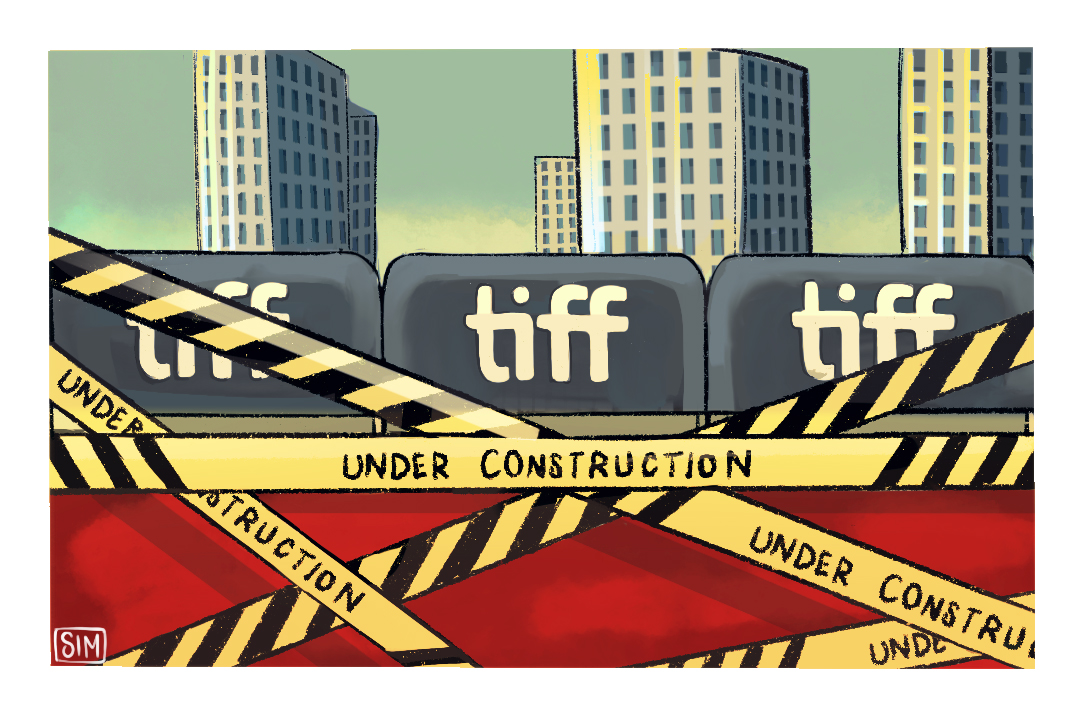The Toronto International Film Festival is an extravaganza that transforms the city into a hub of film enthusiasts, celebrities, and industry professionals every September. While TIFF is renowned for its cinematic offerings, focusing on the festival’s impact on the streets of Toronto can highlight the accessibility challenges surrounding TIFF and their broader implications for urban planning.
The accessibility challenge
TIFF attracts diverse audiences, including individuals with disabilities who face unique setbacks when navigating the festival and its surrounding streets.
According to the Accessibility for Ontarians with Disabilities Act (AODA), venues and events like TIFF are required to be accessible. However, in practice, several accessibility issues persist in the event’s structure.
One critical aspect of accessibility at TIFF is the screening venues. While many venues have made significant improvements in recent years, not all are fully accessible. External theatres associated with TIFF still lack features like ramps, accessible seating, and proper lighting and signage for those with visual impairments. To me, it feels like there has been very little consultation with the people of Toronto and urban planners, and more focus on critics’ and VIPs’ comfort.
I believe TIFF has made many improvements worthy of praise in its Accessibility Plan. For example, the plan states that “open captioning, closed-captioning, and onstage ASL interpretation for live content” is slated to be included in all events by 2026.
I could not help but notice, however, that discussion on mobility issues is rare. The plan includes very little solution to these obstacles, if the obstacles are included at all. I do understand that making mobility promises are difficult, as some venues like the Royal Alexandra Theatre cannot be altered due to their protected status as heritage buildings.
Regardless of how TIFF planners resolve the issue, I hope that they listen to all moviegoers to make cinema and art accessible to everyone.
The role of urban planning
TIFF’s impact on Toronto’s streets goes beyond the festival itself. The transformation of key areas, such as the Entertainment District, during the festival highlights broader urban planning challenges. The city’s approach to accommodating the festival’s influx of visitors can have long-lasting effects on accessibility and urban development.
One notable aspect of TIFF’s effects on urban planning is street closures. While these closures are essential for ensuring the safety of festival-goers, they can disrupt the daily lives of residents and businesses. The TTC has made efforts to strike a balance by providing alternative transportation options and stationing personnel to aid pedestrian traffic during the festival.
This aid from the TTC is more than welcome, but it does not negate the exacerbated consequences commuters face from the closures thanks to Toronto’s poor design. The 504 and 304 King buses set to replace streetcars drastically lengthen the commute for public transit users in a city with an already existing congestion crisis. Negatively impacting transit users’ experience lessens the reliability of transit use during peak times of tourism, when transit use could have potentially hit new financial peaks.
In an ideal world, buses would not be stuck in traffic because single-person occupancy vehicles would, and should, be a thing of the past. Unfortunately, we do not live in this urbanist utopia. Toronto is a city built for cars, so when cars are stuck in traffic, buses are too.
During my research, I found little public dialogue between TIFF and City planners, the TTC, and related transit-advocate groups. I’m disappointed that Toronto fails to take advantage of this globally-coveted event to clean up transit, as well as ensure accessibility and quick transit for not only tourists but also the people of the city.
The way forward
To address the accessibility and urban planning challenges associated with TIFF, organizers need to take a multi-pronged approach.
TIFF should redevelop its accessibility plan to cover all aspects of the festival, from screening venues to transportation and street closures, as I feel the current plan is lacklustre. TIFF planners must develop this plan in consultation with experts and advocacy groups for people with disabilities. Additionally, this plan should be approached from an angle of piloting new initiatives for Toronto alongside urban planners’ advice. TIFF is a wonderful opportunity to not only revolutionize festivals but also to change the city for the better.
Accessibility extends much further than just integrating those with disabilities; it also includes older citizens, children, and tourists. The lack of insight as to who is a part of these accessibility, transit, and mobility discussions is a paramount issue that demands public accountability. The people of Toronto should look forward to TIFF — not complain about its road closures and effect on city traffic. By continuing to approach this event from a place of dissonance, Toronto loses the spark of what I believe makes this city so great: community.
TIFF is not just a celebration of cinema; it’s also an opportunity to address vital issues related to accessibility and urban planning. By taking steps to improve accessibility, both within festival venues and on the city streets, Toronto can ensure that TIFF remains an inclusive and enjoyable experience for all attendees, regardless of their abilities. The collaboration between festival organizers and city officials, along with input from experts and advocacy groups, is key to making this vision a reality.
Ultimately, TIFF can serve as a model for creating a more accessible and inclusive urban environment that benefits everyone throughout the year.
Emily Carlucci is a third-year student at Trinity College studying political science and English. She is The Varsity’s Urban Planning Columnist.



No comments to display.